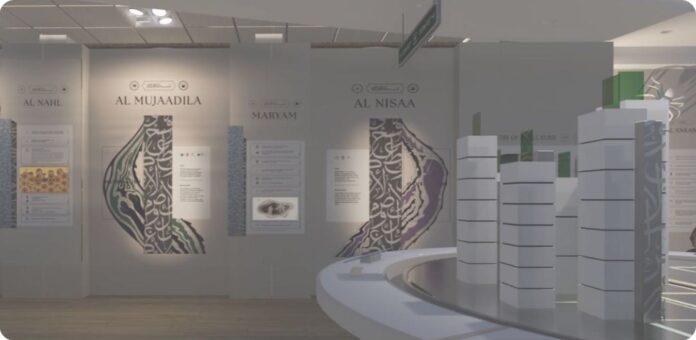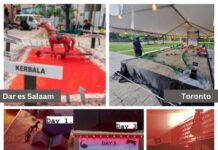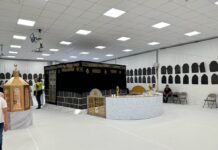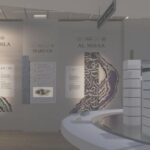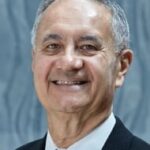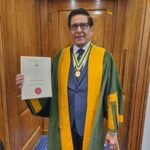On May 3, 2025, the Mulla Asghar Resource Center (MARC) officially launched Qur’an City—a bold, visionary exhibition that transforms the sacred message of the Holy Qur’an into a walkable city of spiritual exploration and immersive learning. Built around 17 distinct zones, each inspired by key Qur’anic themes, the exhibition offers visitors an opportunity not just to read the Qur’an—but to step inside its meanings, walk its path, and reflect on its timeless call to the human soul.
The exhibition was attended by MARC patrons Murabbi Razali Hiridjee, Sadique Jaffer and Mohamed Taki Jaffer, Habib Meghji TWF Vice-President, Rizwan Khalfan ISIJ President and Civic Leaders including the Mayor of Richmond
In his opening address, Dr. Hasnain Walji, Executive Director of MARC, invited attendees to go beyond passive observation and enter the experience with openness and vulnerability: “As I said before—I invite you to get lost. Get lost in the vastness of the Qur’an. Get lost in mercy. Get lost in awe. Get lost in meaning. And in that sacred disorientation—find yourself closer to Allah.”
This invitation set the tone for an exhibition unlike any other—a space where divine message meets personal transformation.

A Walk Through Sacred Space
The Qur’an City walk-through was led by its original creator, Sr. Ummul Banin Merali, whose vision brought the exhibition to life. Visitors began their journey at the Iqra Pedestal, where the Qur’an’s first command—“Read”—is etched in bold simplicity. From there, the path unfolded through 17 suburbs, each illuminating a Qur’anic theme through carefully designed spatial environments, thematic Surahs, and contemplative installations.
In the Viewpoint Terrace, visitors were invited to see life through the lens of sincerity and accountability. In the Energy Zone, Surah Al-Nur cast divine light not just as metaphor, but as momentum—fueling the moral and spiritual journey. The Comfort Zone, grounded in Surahs Al-Dhuha and Al-Inshirah, became a sanctuary for those carrying pain, offering God’s tender empathy.
The Women’s Corner offered powerful reminders of female leadership and piety, with verses from Surahs Maryam, Al-Mujadala, and Al-Nisa placing women at the heart of divine history. Meanwhile, the Tawheed Centre anchored the entire city in the oneness of God—where every thread of meaning is pulled back to unity, purpose, and divine presence.
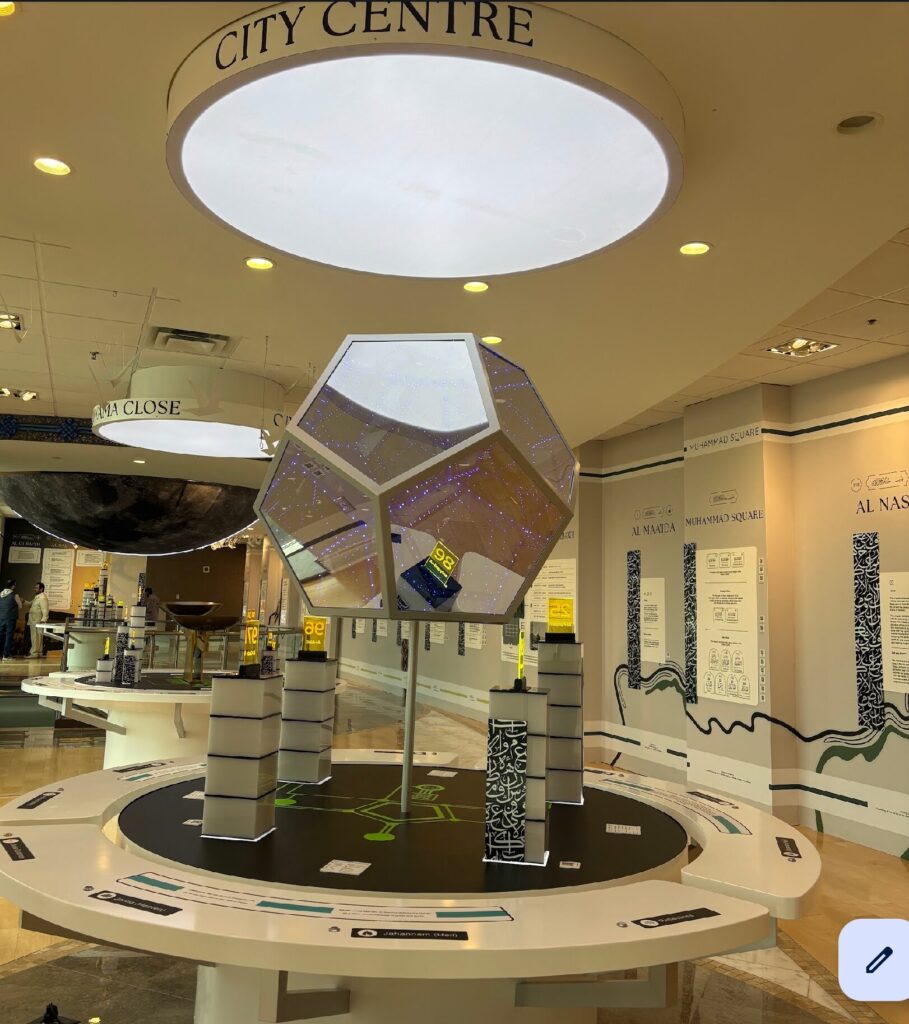
At the very center of the exhibition stood the City Centre Pedestal, over which floated a brilliant dodecahedron—its twelve pentagonal faces symbolizing the Five Panjtan and Twelve Imams. Suspended in light, the structure served not only as a design marvel, but a spiritual axis, grounding the entire experience in sacred continuity.
From there, visitors continued toward spaces of struggle and renewal: the Kaaba Corner, reminding us of unity in diversity; Muhammad Square, echoing the Prophet’s life and light; and the Ambiya Annexe, sharing stories of prophetic resilience. The journey climaxed at Tawba Turn, the roundabout of repentance, and ended at Qiyama Close, where the Qur’an’s reflections on the Hereafter brought the visitor face to face with eternity.
“Every zone is a doorway into the Qur’an,” said Sr. Ummul Banin Merali. “Not as text alone, but as presence, as conversation, as invitation. I wanted people to walk these truths, to feel them, and to carry them out into the world.”
One guest, reflecting at the end of the tour, said: “I’ve read these Surahs before, but today I felt them. This wasn’t just an exhibit—it was a journey through myself.”
First Qur’an City Symposium: Deepening the Conversation
On Sunday, May 4, the First Qur’an City Symposium brought together scholars, educators, and seekers for a day of rich learning and dialogue. The morning session, “Engaging with the Qur’an Through Modern Tools,” featured Sr. Merali and Sr. Marzia Hassan, who explored how storytelling, design innovation, and technology are revolutionizing how young people connect with the Qur’an.
In the afternoon, a high-level panel on “The Qur’an in Contemporary Academia” featured Dr. Liyakat Takim (McMaster University), Dr. Muhammad Sagha and Dr. Payam Mohseni (Harvard Divinity School). Together, they discussed how Qur’anic studies are increasingly integrated into global academic discourse, particularly in addressing issues of ethics, power, social justice, and theology.
The symposium was not just a complement to the exhibition—it was a launchpad for long-term dialogue and intellectual engagement.
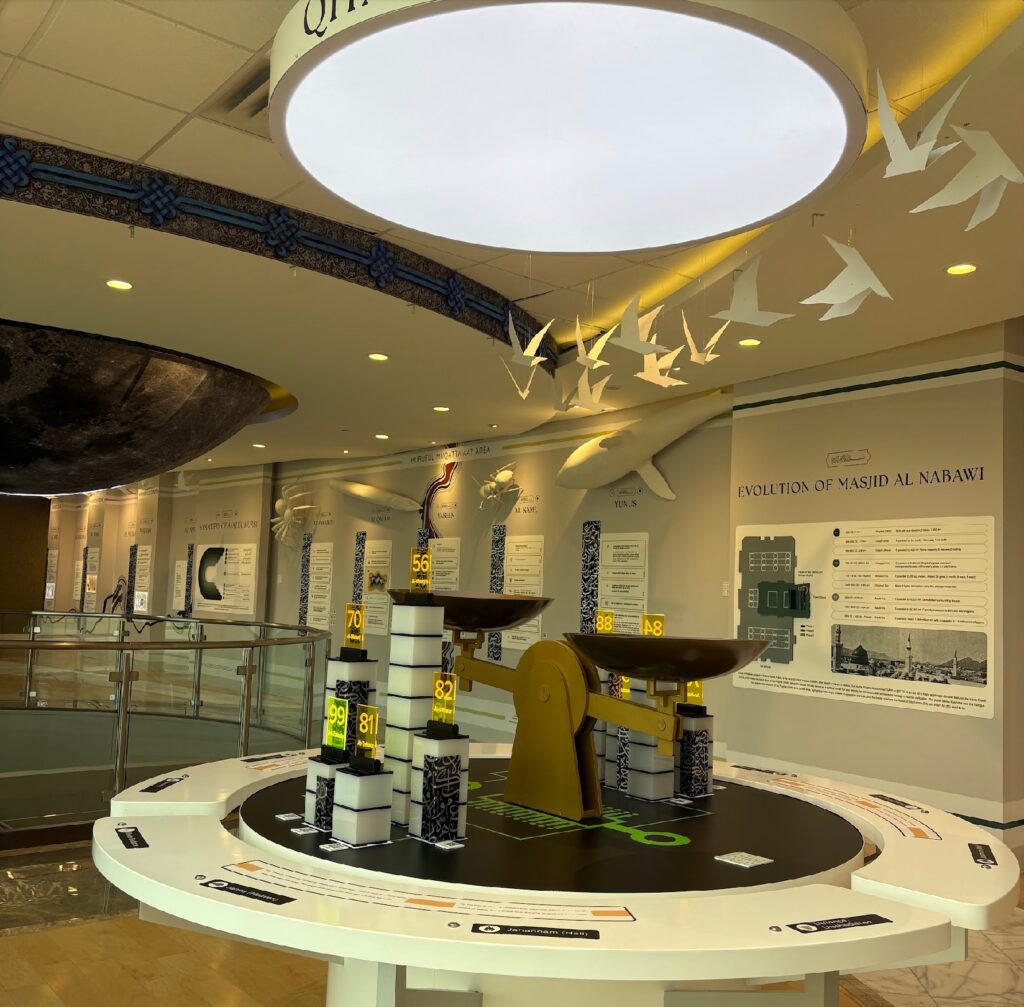
The Journey Continues: Conversations, Community, and Curriculum
Building on the momentum of the opening weekend, MARC announced the launch of Monthly Qur’anic Conversations, each one dedicated to one of the 17 zones. These interactive sessions will offer the public an opportunity to explore each theme in depth—connecting Qur’anic revelation to personal growth and community well-being. Scholars, educators, and thought leaders will guide these discussions, inviting reflection, learning, and transformation.
Additionally, Quarterly Symposia will continue to bring together diverse voices from across disciplines, cultures, and traditions, fostering rich dialogue on how the Qur’an remains a relevant, living text in today’s world.
Dr. Walji concluded: “These 17 zones are not just exhibits—they are mirrors. Qur’an City invites you to come, reflect, question, and return—again and again. Because the Qur’an is not a place we visit. It is a home we’re always being called back to.”
Exhibition Duration: May 2025 – May 2028
Admission: Free and open to all
Venue:
MARC – Mulla Asghar Resource Center
9000 Bathurst Street, Thornhill ON L4J 8A7
Website: www.marcresource.org
Email: mamrc.library@gmail.com
Phone: 905 695 1015



